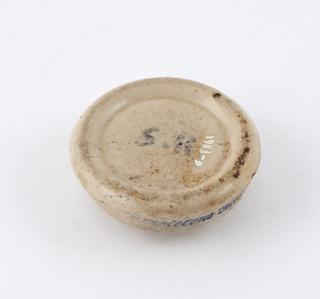
Singleton 1779
- occupation:
- Brand name
- Nationality:
- British
- born in:
- Lambeth, Lambeth, London, Greater London, England, United Kingdom
1569 - Dr. Johnsons Ointment invented. When Johnson dies the recipe is passed to the Hind family but a daughter married Thomas Singleton and took the recipe with her as a marriage portion; Thomas Singleton lived in Lambeth Butts.
1779 - Thomas Singleton dies; leaves the recipe to his son William and the ointment became widely known.
1794 - William passed the recipe to his daughter Selina on her marriage to Timothy Folgham.
1816 - Selina (nee Singleton) Folgham died and passed the recipe equally to her 5 children; The eldest William Singleton Folgham ran the business to his death when it passed to the second child Selina;
1825 - Selina Folgham married Stephen Green and her share passed to him in the marriage settlement. Green was located at Princes St., Lambeth, stone ware manufacturer
1829-about 1877 – Stephen Green resident in 210 Lambeth Road (formerly No. 2 Union Place), Lambeth where the ointment is made
1848 - Green acquired the proprietorship of the recipe.
1860s-1870s – ointment pots manufactured by Mid-Lothian Pottery Co., Portobello, Edinburgh
about 1874 – after Green's death rights eventually passed to the Carlill family who continued manufacture as Stephen Green Limited
1967 - acquired by Fordham Laboratories Limited;
1972 - passed to Northern Pharmaceuticals Limited, Bradford
The ointment contained mercuric oxide.
variety of names used, from Singleton’s Golden Eye Ointment to Singleton’s Golden Ointment
after 1903 - Singleton’s Eye Ointment